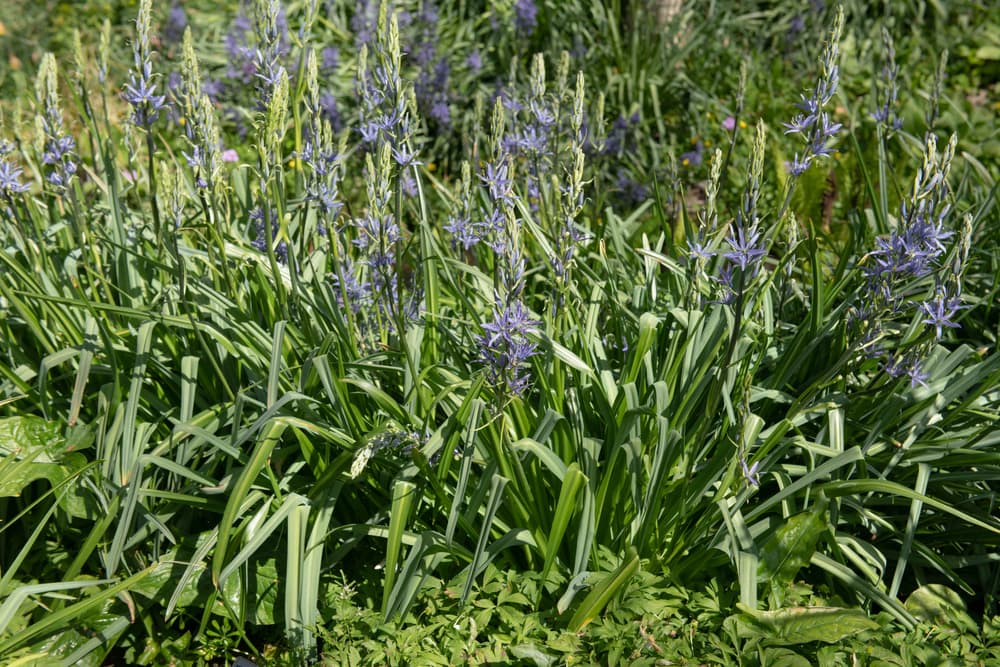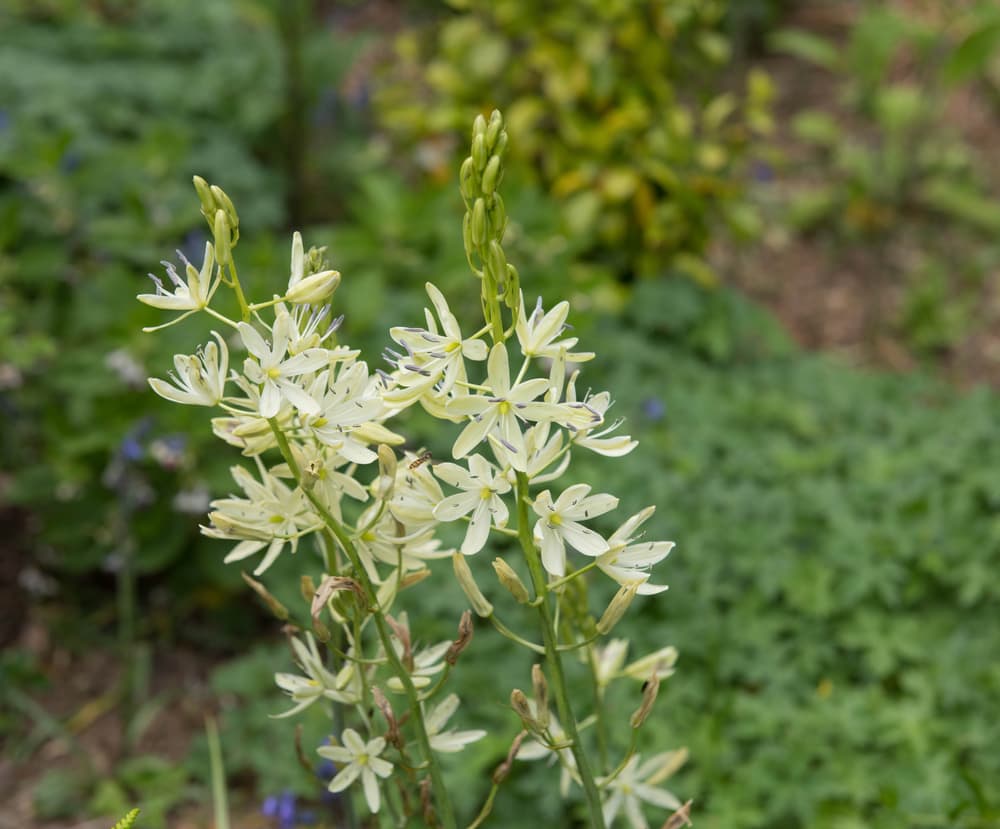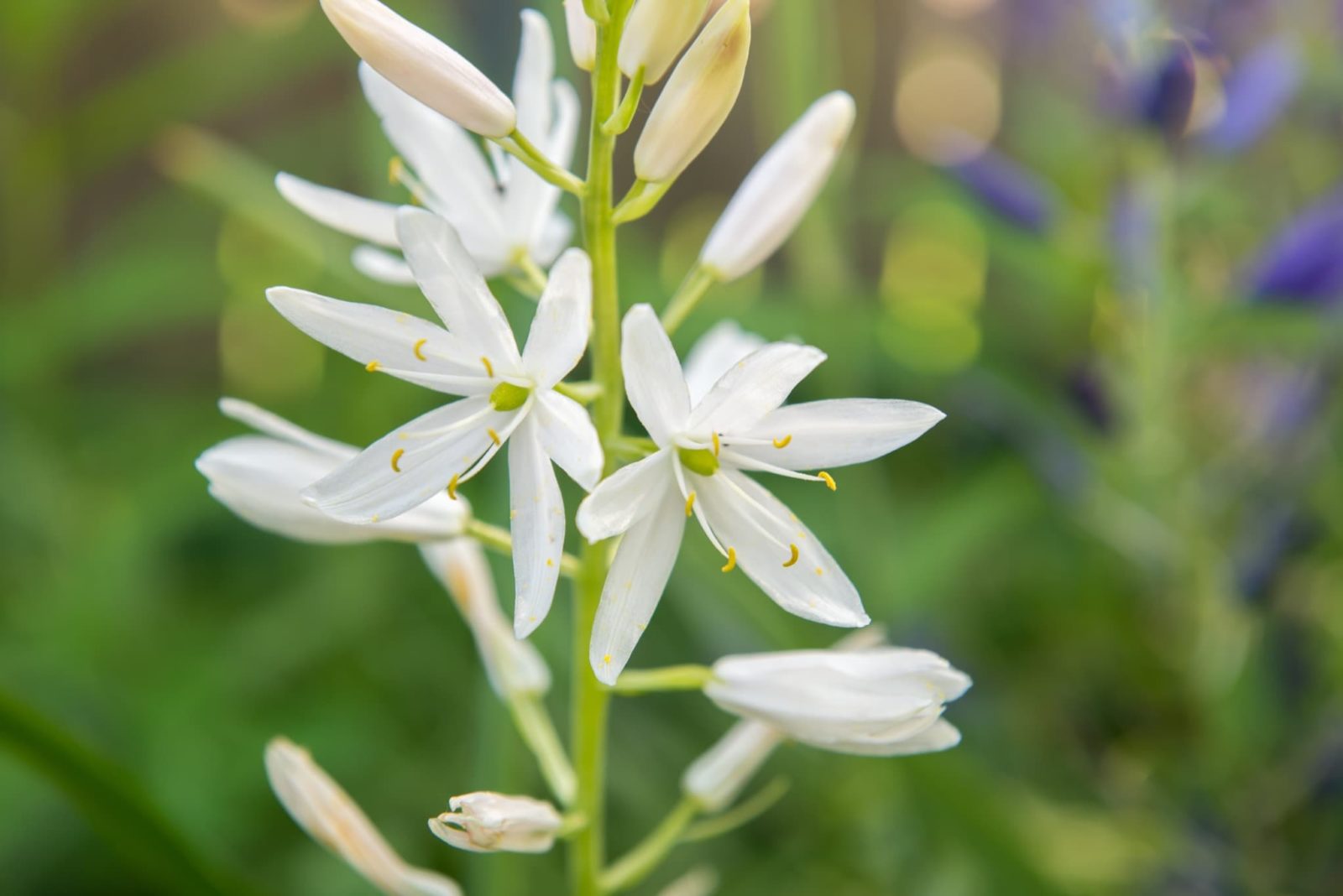Reviewed By COLIN SKELLY

Colin is a Horticulturist and Horticultural Consultant with experience in a range of practical and managerial roles across heritage, commercial and public horticulture. He holds the Royal Horticultural Society’s Master of Horticulture award and has a particular interest in horticultural ecology and naturalistic planting for habitat and climate resilience.
IN THIS GUIDE
CAMASSIA GUIDES
Varieties
Camassia species are native to a north-south swath of land in North America extending from the Rockies in the east to the Pacific in the west, and another north-south swath from Ontario down to Texas all the way east to the Atlantic coast.1Camassia quamash. (n.d.). The University of Texas at Austin. Retrieved March 13, 2023, from https://www.wildflower.org/plants/result.php?id_plant=caqu2
Camassia’s greatest concentration and diversity is in Oregon.2Davis, A. (2018, May 29). Determining the Influence of Nutrition and Temperature on the Growth and Development of Camassia spp. Oregon State University. Retrieved March 13, 2023, from https://ir.library.oregonstate.edu/downloads/sq87c049c
In their native habitat, Camassias sprout and spread in sunny prairies and flatlands, but also along streams and other wetlands, being partial to moist regions.
They are also seen on mountainsides and hilly areas.
As an American-native flowering bulb, Camassia is something of a rarity as most flowering bulbs tend to originate from Europe.

Camassia, well-bred and reserved, has not made any serious moves to colonise, or naturalise itself in, foreign lands.
It has seen a deserved rise in popularity in the British Isles where it is slowly but steadily gaining traction with gardeners who are looking for something off the beaten track.
This denizen of the American prairies is just hardy enough in most of the United Kingdom at a Hardiness of H4.
Here are nine interesting varieties to grow:
1) C. leichtlinii

Probably the most floriferous of the species.
It is also one of the tallest considering that spikes top out at 1.3m.
Its leaves are strap-like and not as narrow as those of the other species.
Its flowers are a rich purple and it grows wild from British Columbia down to California.
It is the most cultivated among the 6 species.
2) C. leichtlinii subsp. suksdorfii Caerulea Group

Also bears purple flowers but of a pleasant, mid-tone hue; it too can reach about 1.3m.
This is one of the most widely available and popular varieties.
3) C. cusickii

Probably the most leafy of the species.
It too is one of the tallest as spikes can reach 1.3m.
The flowers’ tepals are especially narrow, almost wispy.
They are of a cool, pastel tone of lilac often shifted to blue – it is a native of Oregon.
4) C. quamash

Has the most extensive range; it grows in a large swath of western North America.
It reaches a height of not much more than 30cm, while its foliage is comparatively limp.
“I have grown Camassia quamash successfully in pots,” says Colin Skelly, a Master Horticulturist.
“Whilst most will struggle for moisture in summer and look messy when the foliage is dying down, this smaller species makes a good partner for a later flowering perennial in a pot.”
The flowers are a saturated tone of purple.
5) C. scilloides

One of the less-desired species and it is the only one that is native to the eastern half of North America.
Though certainly not as sought after as the Western species, its creamy white or lilac-tinged flowers on frothy racemes are quite pleasant.
Among the notable cultivars are those with flowers of an especially rich or unusual colour, double or distinctly large flowers, and variegated foliage.
6) C. leichtlinii ‘Sacajawea’

The flowers are off-white or vanilla white, whereas the foliage is variegated, exhibiting white edging.
7) C. leichtlinii subsp. leichtlinii ‘Alba’

‘Alba’ is striking for the fullness of its flowers and their (very) creamy white colour.
It is mid-height at about 80cm.
8) C. leichtlinii ‘Semiplena’

‘Semiplena’ bears creamy white or yellowish-white double-form flowers.
Other Notable Varieties
‘Blue Danube’ bears flowers of an especially deep purple-blue colour.
‘Blue Heaven,’ on the other extreme, has flowers that are the palest tone of baby blue.
‘Pink Star’ bears flowers with thick tepals of a very pale salmon-pink tone.
‘Electra’ produces flowers that are a ‘normal’ shade of purple but these blooms are large!
All of the above are cultivars of C. leichtlinii.
References
- 1Camassia quamash. (n.d.). The University of Texas at Austin. Retrieved March 13, 2023, from https://www.wildflower.org/plants/result.php?id_plant=caqu2
- 2Davis, A. (2018, May 29). Determining the Influence of Nutrition and Temperature on the Growth and Development of Camassia spp. Oregon State University. Retrieved March 13, 2023, from https://ir.library.oregonstate.edu/downloads/sq87c049c


